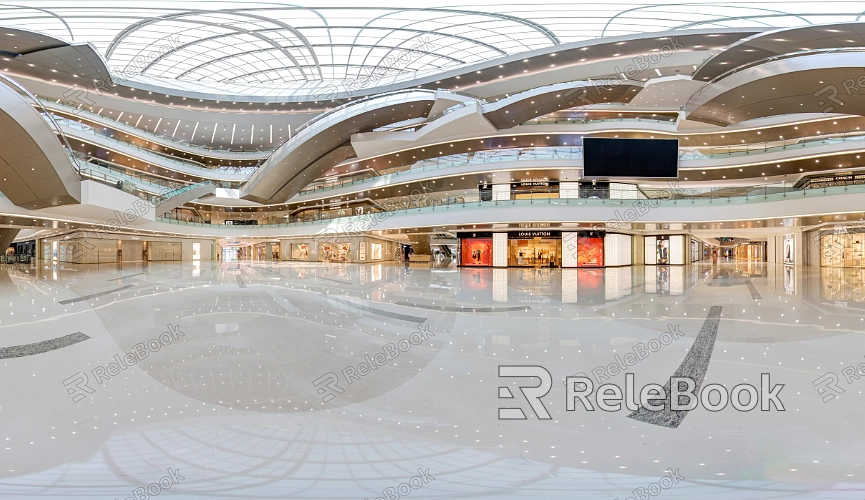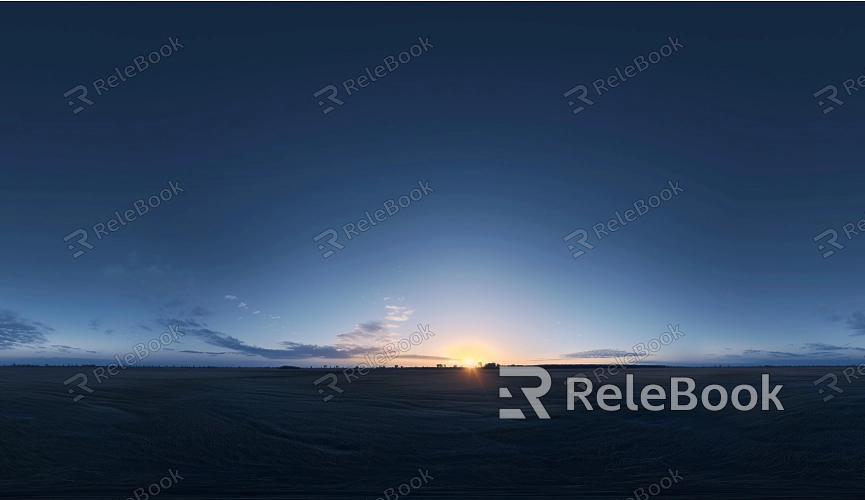How to Make HDR Images for 3D
HDR images are widely used in architecture, interior design, gaming, and visual effects to enhance the realism and visual impact of scenes. Popular 3D software like Blender, 3ds Max, and Maya all support HDR imaging, which captures more light details and preserves rich depth in both highlights and shadows. This article will explore how to create HDR images for 3D projects, helping designers improve their visual outcomes.

1.Understanding the Core Concepts of HDR Images
What is an HDR Image?
HDR images extend the range of brightness to capture a broader spectrum of light and color information. Unlike traditional images that can only display a limited range of brightness, HDR images retain details in both bright highlights and deep shadows, resulting in a more vivid and realistic overall appearance.
Importance in 3D Design
HDR images are commonly used as environment light sources or reflection maps in 3D scenes. They simulate real-world lighting conditions, making renders look more natural. For example, in architectural visualization, HDR images ensure smooth transitions between indoor and outdoor lighting, while in game development, they add realistic lighting and shadow effects to dynamic scenes.
2.Basic Steps to Create HDR Images
Capture Multiple Exposures
To create a high-quality HDR image, start by taking several photos with different exposure settings. Typically, you need at least three shots: one with normal exposure, one overexposed, and one underexposed. These images are then merged into an HDR image to capture the full range of light details.
Process the Images with Software
Use software like Photoshop, Photomatix Pro, or HDR Efex Pro to combine the different exposures into an HDR image. These tools offer advanced merging algorithms to smooth out highlights and shadows, resulting in a rich and detailed HDR image.
Adjust Tone Mapping
After creating the HDR image, apply tone mapping to adjust the color and contrast to fit the needs of your 3D scene. Tone mapping helps in tweaking the overall brightness and contrast, ensuring the image performs well under various lighting conditions.

3.Applying HDR Images in 3D Software
Import HDR Images as Environment Light Sources
In 3D software, HDR images are typically used for environment lighting. Import the HDR image and set it as the light source for your scene. This creates more realistic lighting effects, especially in scenes with complex light reflections and refractions.
Optimize Rendering Settings
To fully leverage HDR images, optimizing rendering settings is crucial. Adjust parameters like exposure control, gamma correction, and global illumination to ensure the HDR image integrates naturally into the scene and maintains its unique lighting effects. Different 3D software may have varying settings, but the goal is the same: to seamlessly blend the HDR image into the scene.
Use HDR Images as Reflection Maps
HDR images can also be used as reflection maps for materials. On reflective surfaces such as metal or glass, HDR images can simulate accurate environmental reflections, enhancing the realism of the material. Applying the HDR image to the material's reflection channel boosts the object's depth and shine.
4.Further Optimizing HDR Image Effects
Adjust Brightness and Contrast
Depending on the specific scene requirements, further adjustments to the HDR image’s brightness and contrast may be necessary. Use tools like Photoshop to fine-tune local areas of the image, ensuring the final effect aligns with your design expectations.
Apply Post-Processing Techniques
After rendering, you can use post-processing techniques to further enhance the HDR image. Techniques like color grading and sharpening can improve the detail and visual impact of the image in the final output.
Test and Refine
Testing is a key step in ensuring the HDR image's effectiveness. Apply the HDR image to different scenes and make adjustments based on the results. Continuously refine the image until it performs well under various lighting conditions.
By following these steps, you can create outstanding HDR images for your 3D projects, significantly enhancing the visual quality of your scenes. If you're looking for high-quality HDR image resources, 3D textures, SketchUp models, or 3ds Max models to create detailed models and virtual scenes, Relebook is an excellent resource. Downloading textures and model assets from Relebook can greatly improve the quality and completeness of your projects.

